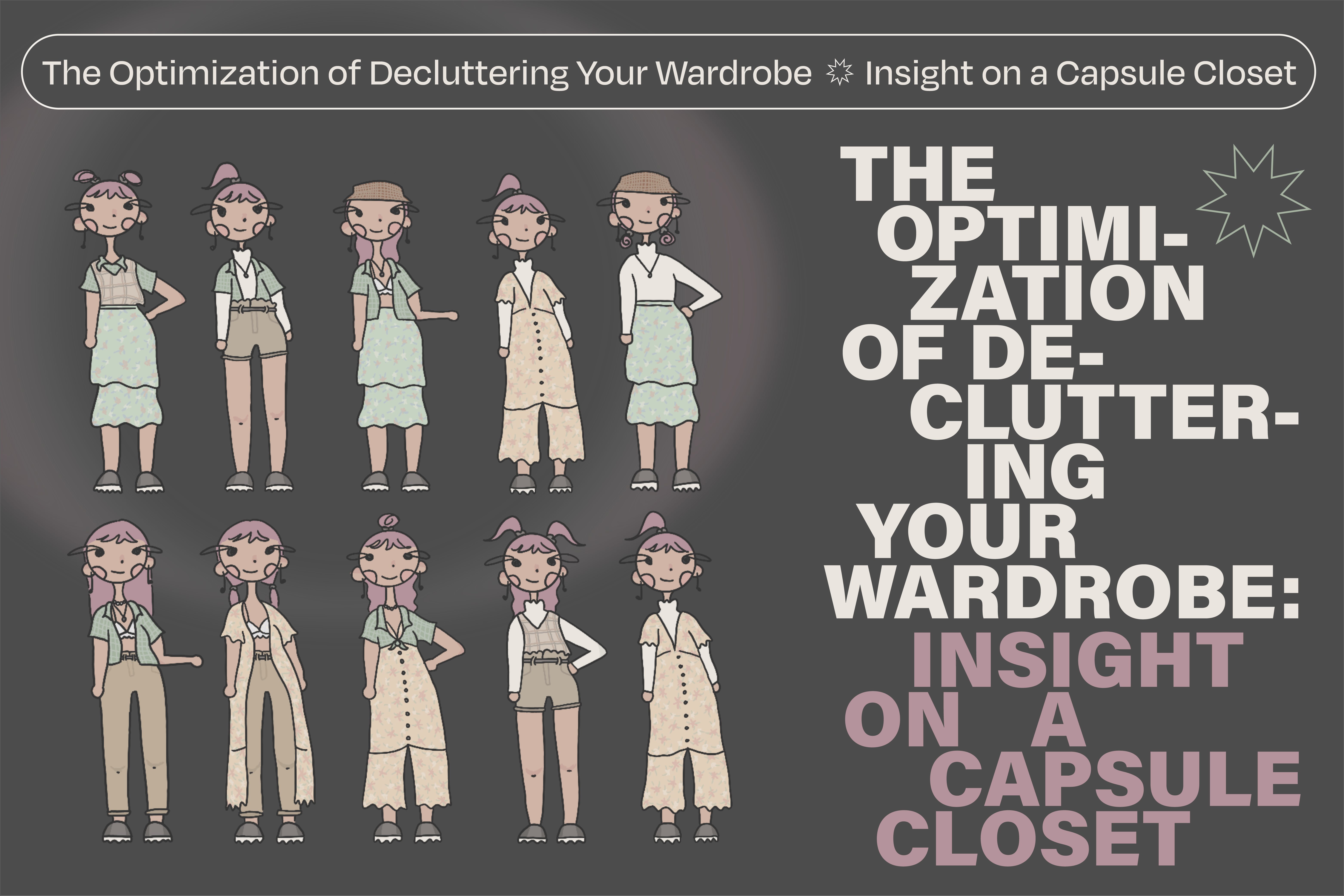I remember in the 7th grade. I overheard girls talking in science class about someone who wore the same shirt twice in one week. That was the first time I ever noticed that people cared about things like that. It’s still a foreign topic to me, especially as someone raised as the youngest, only wearing hand-me-downs or thrifted pieces. Everyone had already worn my clothes before me, so why was it so strange for me to wear them too? That’s when I first found out about the stigma surrounding outfit repetition.
By all means, I still grew up well off. Clothes were just never one of the things that took priority in my family. So when I grew up more, got my own job, and was exposed to social media, that’s when I first started really curating my closet.
I was a chronic hoarder of clothes until about two years ago. Throughout my life, I would only get rid of clothes when they were completely destroyed or too small. In high school (and even now), I still have pieces I originally bought in 2015. (I even have some things my dad bought for himself from when he was in high school. Our attachment to keep things runs deep in our blood.) But one day, something within me clicked.
Growing up, I had always been a more sustainably-minded person, very conscious of human impact, even on an individual scale. I was thrifting before it “became trendy,” but there were so many issues that arose with that itself. I’m still contributing towards an unsustainable market, I could be taking from those who need it more, and I was still buying just because I could. I wanted new pieces rather than pieces I loved. This was when I started getting interested in capsule wardrobes.
Complete disclaimer: The concept of choosing to have fewer clothes, let alone high-quality garments, is a very privileged thing to say and act on.
Capsule wardrobes are a thirty(ish) piece collection of garments that can all be worn together. It emphasizes taking what you already have and love, getting rid of what you don’t and only buying a few more items. It works with the versatility of each piece and shows how harmonious they can be with each other.
This played into what I was interested in with being more sustainable (the most sustainable option is the option you already have) while also having a more personalized wardrobe. Plus, it relies heavily on creativity and transforming pieces.
What I was surprised to find out, however, is that it was a lot easier than it looked. The hardest part was getting started and even thinking of the idea in the first place.
I started by going through what I usually wore and then (everyone’s favorite) making a Pinterest board to see what I thought I would like on myself. After decluttering, I noticed I liked pieces that were generally muted in color, especially brown and green, and I liked a looser fit. I also noticed things that were never really the first thought. I gravitated towards pieces I didn’t have to wear a bra with, and I got rid of all but two pairs of shorts. I used these different factors to buy what else I thought I needed or what I needed to replace.
With this back and forth, I settled on about thirty pieces year-round, with maybe ten more for the extreme cold. (Being from Colorado makes this a real necessity.) While that is still pretty loose for a capsule wardrobe, it serves its purpose effectively because it suits me. It doesn’t matter what guidelines are used as long as they are suited towards the individual anyways. (Gatekeeping a capsule wardrobe is not my intention because that’s for the weak.)
The main factors to remember are that you don’t want to buy new things more than once a year, and if you do, you should try to get rid of something else.
While there are instances that this has tested me (like the fact that I own zero cardigans and that is a real tragedy), I have gotten around any barrier by either borrowing something from a friend or renting outfits instead of buying them. (This was a wallet saver for prom and other more formal events.)
At the end of the day, I have clothes that I know I like and can wear in more than one or two ways, and I can do that through the most sustainable means.
Words and Graphics by Fai McCurdy.

